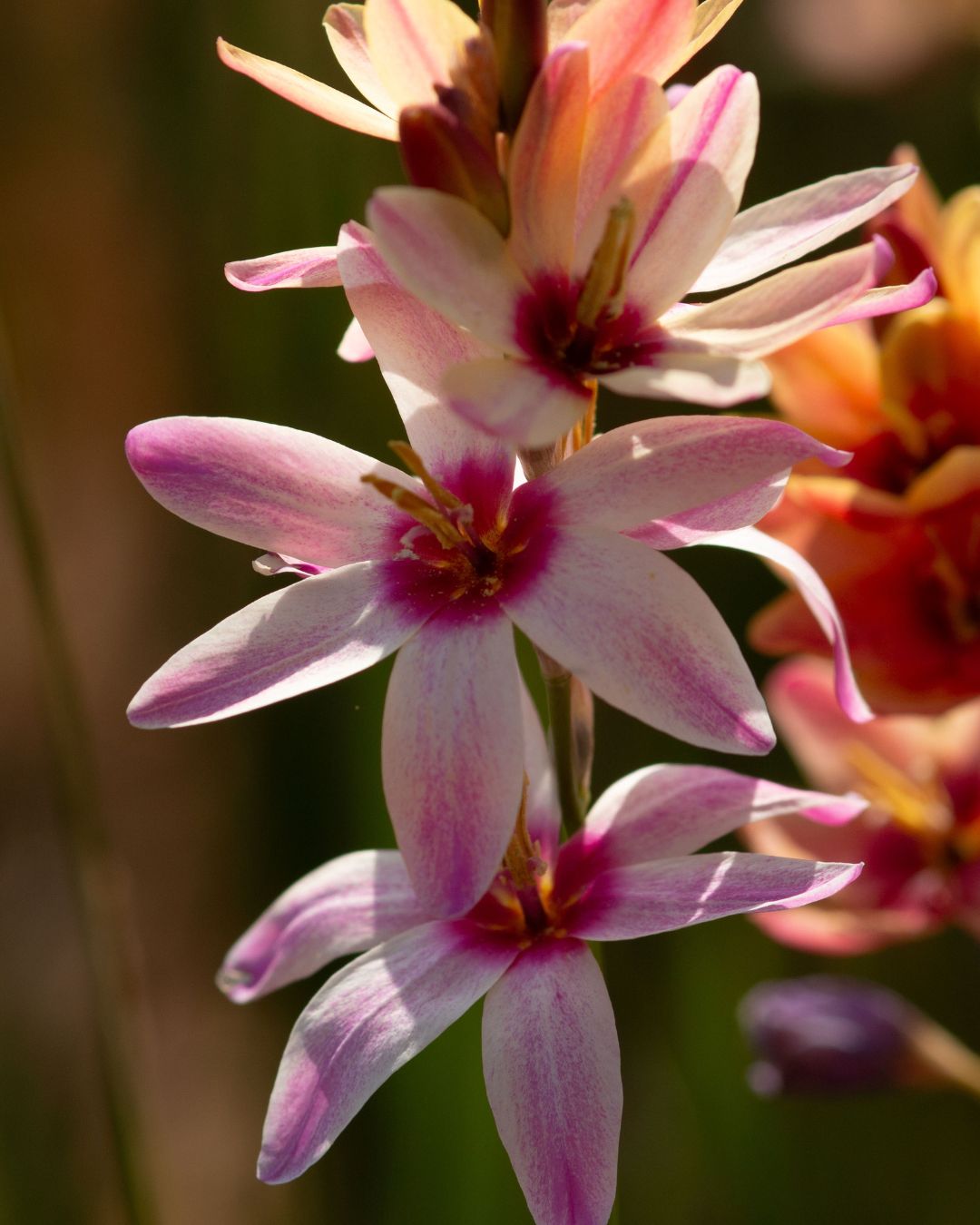
Dopamine Gardening With Indigenous Ixia
Alright, fellow flower enthusiasts, gather round for a whimsical tale of botanical wonder! If you're the kind who delights in curating your wardrobe, listen up: there's a trend doing its rounds known as dopamine dressing, where vibrant hues reign supreme and make you feel like a million bucks. For those who couldn’t give a fig about fashion, the premise is simple, there is magic in colour. So, brace yourselves gardeners, as we're about to embark on a magical journey into dopamine gardening.
Imagine this: you're nestled in your garden, bathed in the warm glow of the sun, surrounded by nature's enchanting beauty. Now what better way to sprinkle some magic into your flower beds than with the magnificent and indigenous Ixia? These floral marvels are like the wizards of the plant kingdom, with their slender stems and bewitching blooms in shades of orange, purple, mauve, pink, red, cream, white and yellow. Isn’t this starting to sound a bit like that pot of gold at the end of the rainbow? Let's not forget that dark contrasting centre, beckoning you closer with pure mystique. Known as the wand flower, these beguiling blooms are so captivating, they will leave you utterly spellbound.

Now, let's dig into the foolproof process of growing Ixia and weaving a tapestry of colour in your garden. The time to plant Ixia corms is typically between April and May, when the earth is ripe for transformation. Choose a sunkissed spot or dappled with the soft glow of semi-shade for optimal technicoloured results come spring. These local wonders thrive in well-drained soil and appreciate a blanket of mulch to keep them cosy.
How to plant Ixia
Follow these six, super simple steps and enjoy a riot of colour come spring.

- Loosen the soil to a depth of about 30cm. You want your Ixia to settle in comfortably, while letting their roots run free.
- Work in some sand, which will promote drainage.
- Place the corms 5cm apart so each flowering plant reaches its full potential.
- Tuck them in under 2cm of soil.
- Although frost-resistant, we recommend you mulch them with compost.
- Give them a deep watering for 10 minutes.
- Nurture your corms with continuous care and let the magic unfold.
Caring for Ixia is as simple as waving a wand:
- Water them every three to four days for 10 minutes, unless nature decides to give them a hose.
- Treat them to a feast of Hadeco Bulb Food or similar once a month.
As for the grand unveiling of their splendour, prepare for a colour spectacle come early spring. From September onwards, if you planted in April, prepare to be dazzled by a colourful canvas that will leave you breathless.
Can you grow Ixia in containers?
What about planting Ixia in pots, you ask? While it's certainly possible, there is something truly magical about setting them free in a garden bed, where they can dance and flourish to their heart's content. They look best in large displays anyway and are a budget-friendly option for brightening up garden beds.
Ixia corms and cormlets
Ixia has a trick up its sleeve, reproducing itself through cormlet production, ensuring a bountiful harvest of colour without breaking a sweat. Come December, your Ixia can be lifted, just don’t forget to lift the smaller cormlets that formed during winter. On the other hand, if your soil is well-draining and little summer rainfall is expected you can leave them in the ground. If you are storing them, make sure to keep them dry and at room temperature. We recommend keeping them in brown paper bags or cardboard boxes.
These local blooms open up during the day and close up a little at night. They make splendid cut flowers and will look gorgeous in vases displayed around your home. May your garden be forever ablaze with the beauty of Ixia's spellbinding blooms.
Happy planting!

Leave a comment